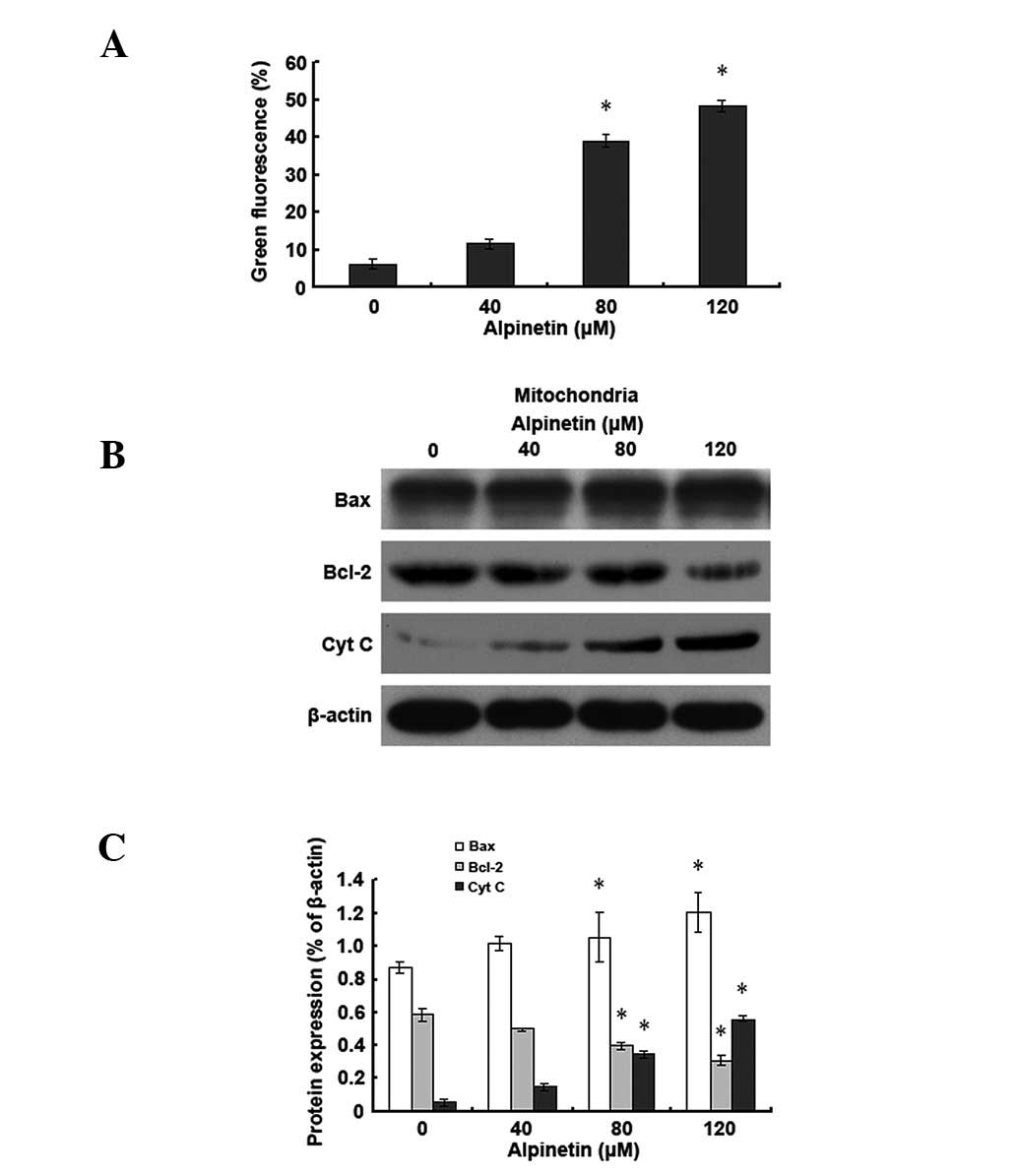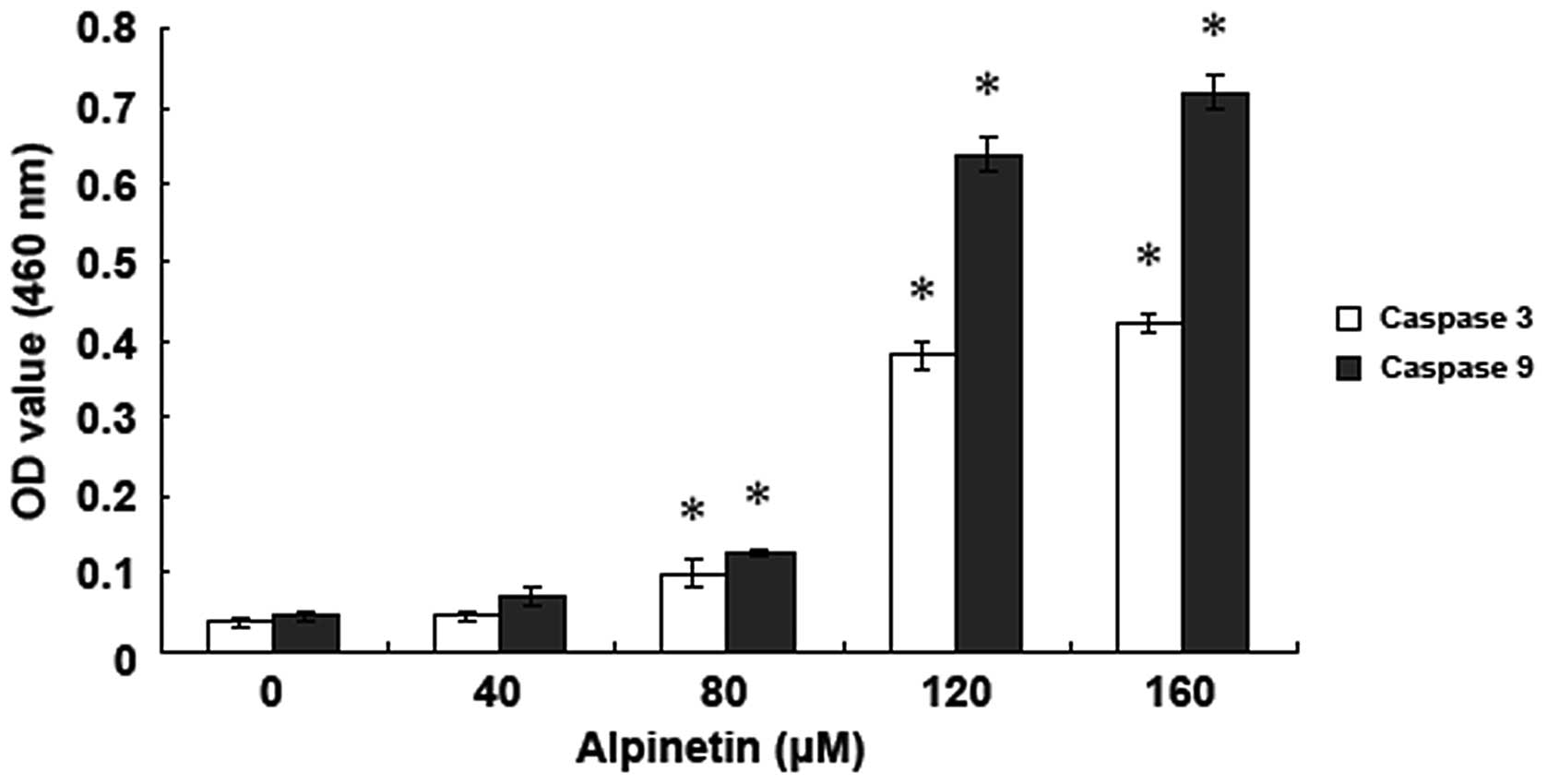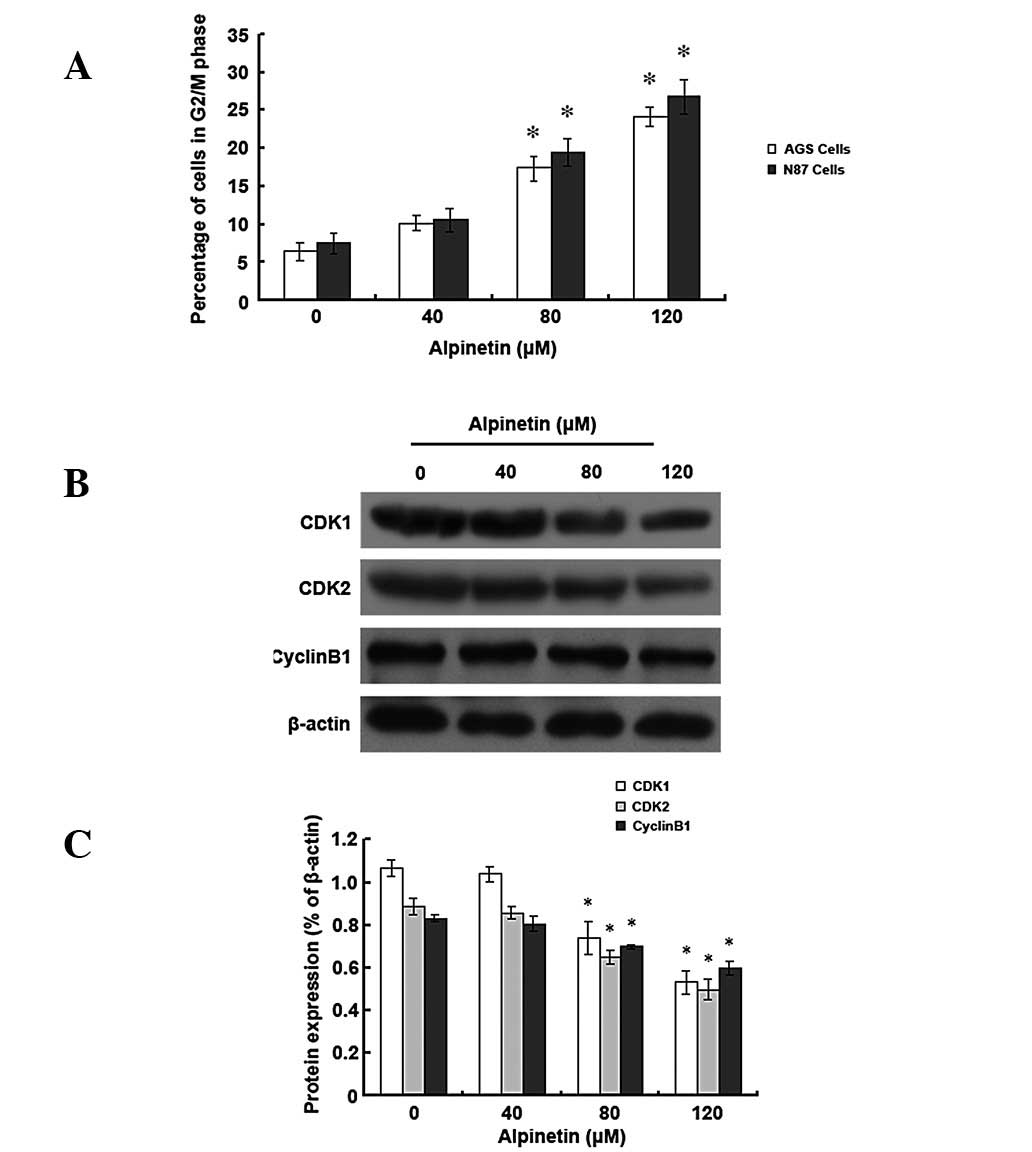|
1
|
Kamangar F, Dores GM and Anderson WF:
Patterns of cancer incidence, mortality and prevalence across five
continents: defining priorities to reduce cancer disparities in
different geographic regions of the world. J Clin Oncol.
24:2137–2150. 2006. View Article : Google Scholar
|
|
2
|
Mackenzie M, Spithoff K and Jonker D:
Systemic therapy for advanced gastric cancer: a clinical practice
guideline. Curr Oncol. 18:e202–e209. 2011. View Article : Google Scholar : PubMed/NCBI
|
|
3
|
Wagner AD, Grothe W, Haerting J, Kleber G,
Grothey A and Fleig WE: Chemotherapy in advanced gastric cancer: a
systematic review and meta-analysis based on aggregate data. J Clin
Oncol. 24:2903–2909. 2006. View Article : Google Scholar : PubMed/NCBI
|
|
4
|
Ngeow J, Tan IB and Choo SP: Targeted
therapies in the treatment of gastric cancer. Asia Pac J Clin
Oncol. 7:224–235. 2011. View Article : Google Scholar : PubMed/NCBI
|
|
5
|
Dikken JL, van de Velde CJ, Coit DG, Shah
MA, Verheij M and Cats A: Treatment of resectable gastric cancer.
Therap Adv Gastroenterol. 5:49–69. 2012. View Article : Google Scholar
|
|
6
|
Takahashi H, Chen MC, Pham H, Angst E,
King JC, Park J, Brovman EY, Ishiguro H, Harris DM, Reber HA, Hines
OJ, Gukovskaya AS, Go VL and Eibl G: Baicalein, a component of
Scutellaria baicalensis, induces apoptosis by Mcl-1
down-regulation in human pancreatic cancer cells. Biochim Biophys
Acta. 1813:1465–1474. 2011.
|
|
7
|
Gao J, Morgan WA, Sanchez-Medina A and
Corcoran O: The ethanol extract of Scutellaria baicalensis
and the active compounds induce cell cycle arrest and apoptosis
including upregulation of p53 and Bax in human lung cancer cells.
Toxicol Appl Pharmacol. 254:221–228. 2011.PubMed/NCBI
|
|
8
|
Lee DH, Kim C, Zhang L and Lee YJ: Role of
p53, PUMA and Bax in wogonin-induced apoptosis in human cancer
cells. Biochem Pharmacol. 75:2020–2033. 2008. View Article : Google Scholar : PubMed/NCBI
|
|
9
|
He W, Li Y, Tang J, Luan F, Jin J and Hu
Z: Comparison of the characterization on binding of alpinetin and
cardamonin to lysozyme by spectroscopic methods. Int J Biol
Macromol. 39:165–173. 2006. View Article : Google Scholar : PubMed/NCBI
|
|
10
|
In LL, Azmi MN, Ibrahim H, Awang K and
Nagoor NH: 1′S-1′-acetoxyeugenol acetate: a novel phenylpropanoid
from Alpinia conchigera enhances the apoptotic effects of
paclitaxel in MCF-7 cells through NF-κB inactivation. Anticancer
Drugs. 22:424–434. 2011.
|
|
11
|
Malek SN, Phang CW, Ibrahim H, Norhanom AW
and Sim KS: Phytochemical and cytotoxic investigations of
Alpinia mutica rhizomes. Molecules. 16:583–589. 2011.
View Article : Google Scholar : PubMed/NCBI
|
|
12
|
He ZH, Ge W, Yue GG, Lau CB, He MF and But
PP: Anti-angiogenic effects of the fruit of Alpinia
oxyphylla. J Ethnopharmacol. 132:443–449. 2010. View Article : Google Scholar : PubMed/NCBI
|
|
13
|
Du J, Tang B, Wang J, Sui H, Jin X, Wang L
and Wang Z: Antiproliferative effect of alpinetin in BxPC-3
pancreatic cancer cells. Int J Mol Med. 29:607–612. 2012.PubMed/NCBI
|
|
14
|
Tang B, Zhang Y, Liang R, Yuan P, Du J,
Wang H and Wang L: Activation of the δ-opioid receptor inhibits
serum deprivation-induced apoptosis of human liver cells via the
activation of PKC and the mitochondrial pathway. Int J Mol Med.
28:1077–1085. 2011.
|
|
15
|
Hohenberger P and Gretschel S: Gastric
cancer. Lancet. 362:305–315. 2003. View Article : Google Scholar
|
|
16
|
Lee JH, Kim KM, Cheong JH and Noh SH:
Current management and future strategies of gastric cancer. Yonsei
Med J. 53:248–257. 2012. View Article : Google Scholar : PubMed/NCBI
|
|
17
|
He W, Li Y, Xue C, Hu Z, Chen X and Sheng
F: Effect of Chinese medicine alpinetin on the structure of human
serum albumin. Bioorg Med Chem. 13:1837–1845. 2005. View Article : Google Scholar : PubMed/NCBI
|
|
18
|
Singh R, Singh S, Kumar S and Arora S:
Evaluation of antioxidant potential of ethyl acetate
extract/fractions of Acacia auriculiformis A. Cunn. Food
Chem Toxicol. 45:1216–1223. 2007. View Article : Google Scholar : PubMed/NCBI
|
|
19
|
Li F, Li C, Zhang H, Lu Z, Li Z, You Q, Lu
N and Guo Q: VI-14, a novel flavonoid derivative, inhibits
migration and invasion of human breast cancer cells. Toxicol Appl
Pharmacol. 261:217–226. 2012. View Article : Google Scholar : PubMed/NCBI
|
|
20
|
White JB, Beckford J, Yadegarynia S, Ngo
N, Lialiutska T and d’Alarcao M: Some natural flavonoids are
competitive inhibitors of Caspase-1, -3 and -7 despite their
cellular toxicity. Food Chem. 131:1453–1459. 2012. View Article : Google Scholar : PubMed/NCBI
|
|
21
|
Salmela AL, Pouwels J, Kukkonen-Macchi A,
Waris S, Toivonen P, Jaakkola K, Mäki-Jouppila J, Kallio L and
Kallio MJ: The flavonoid eupatorin inactivates the mitotic
checkpoint leading to polyploidy and apoptosis. Exp Cell Res.
318:578–592. 2012. View Article : Google Scholar : PubMed/NCBI
|
|
22
|
Wang B and Zhang X: Inhibitory effects of
Broccolini leaf flavonoids on human cancer cells. Scanning. 34:1–5.
2012. View Article : Google Scholar : PubMed/NCBI
|
|
23
|
Konan NA, Lincopan N, Collantes Díaz IE,
de Fátima Jacysyn J, Tanae Tiba MM, Amarante Mendes JG, Bacchi EM
and Spira B: Cytotoxicity of cashew flavonoids towards malignant
cell lines. Exp Toxicol Pathol. 64:435–440. 2012. View Article : Google Scholar : PubMed/NCBI
|
|
24
|
Tang J, Li N, Dai H and Wang K: Chemical
constituents from seeds of Alpinia katsumadai, inhibition on
NF-kappaB activation and anti-tumor effect. Zhongguo Zhong Yao Za
Zhi. 35:1710–1714. 2010.(In Chinese).
|
|
25
|
Evan G and Littlewood T: A matter of life
and cell death. Science. 281:1317–1322. 1998. View Article : Google Scholar : PubMed/NCBI
|
|
26
|
Williams GT: Programmed cell death:
apoptosis and oncogenesis. Cell. 65:1097–1098. 1991. View Article : Google Scholar : PubMed/NCBI
|
|
27
|
Powathil GG, Gordon KE, Hill LA and
Chaplain MA: Modelling the effects of cell-cycle heterogeneity on
the response of a solid tumour to chemotherapy: Biological insights
from a hybrid multiscale cellular automaton model. J Theor Biol.
308:1–19. 2012. View Article : Google Scholar
|
|
28
|
Wang XM, Cui JW, Li W, Cai L, Song W and
Wang GJ: Silencing of the COPS3 gene by siRNA reduces proliferation
of lung cancer cells most likely via induction of cell cycle arrest
and apoptosis. Asian Pac J Cancer Prev. 13:1043–1048. 2012.
View Article : Google Scholar : PubMed/NCBI
|
|
29
|
Pietrantonio F, Biondani P, de Braud F,
Pellegrinelli A, Bianchini G, Perrone F, Formisano B and Di
Bartolomeo M: Bax expression is predictive of favorable clinical
outcome in chemonaive advanced gastric cancer patients treated with
capecitabine, oxaliplatin and irinotecan regimen. Transl Oncol.
5:155–159. 2012. View Article : Google Scholar
|
|
30
|
Burlacu A: Regulation of apoptosis by
Bcl-2 family proteins. J Cell Mol Med. 7:249–257. 2003. View Article : Google Scholar : PubMed/NCBI
|
|
31
|
Szabò I, Soddemann M, Leanza L, Zoratti M
and Gulbins E: Single-point mutations of a lysine residue change
function of Bax and Bcl-xL expressed in Bax- and Bak-less mouse
embryonic fibroblasts: novel insights into the molecular mechanisms
of Bax-induced apoptosis. Cell Death Differ. 18:427–438. 2011.
|
|
32
|
Zeng L, Li T, Xu DC, Liu J, Mao G, Cui MZ,
Fu X and Xu X: Death receptor 6 induces apoptosis not through type
I or type II pathways, but via a unique mitochondria-dependent
pathway by interacting with bax protein. J Biol Chem.
287:29125–29133. 2012. View Article : Google Scholar : PubMed/NCBI
|
|
33
|
Riedl SJ and Shi Y: Molecular mechanisms
of caspase regulation during apoptosis. Nat Rev Mol Cell Biol.
5:897–907. 2004. View
Article : Google Scholar : PubMed/NCBI
|
|
34
|
Eldering E, Mackus WJ, Derks IA, Evers LM,
Beuling E, Teeling P, Lens SM, van Oers MH and van Lier RA:
Apoptosis via the B cell antigen receptor requires Bax
translocation and involves mitochondrial depolarization, cytochrome
C release and caspase-9 activation. Eur J Immunol. 34:1950–1960.
2004. View Article : Google Scholar
|
|
35
|
Chen M and Wang J: Initiator caspases in
apoptosis signaling pathways. Apoptosis. 7:313–319. 2002.
View Article : Google Scholar
|














